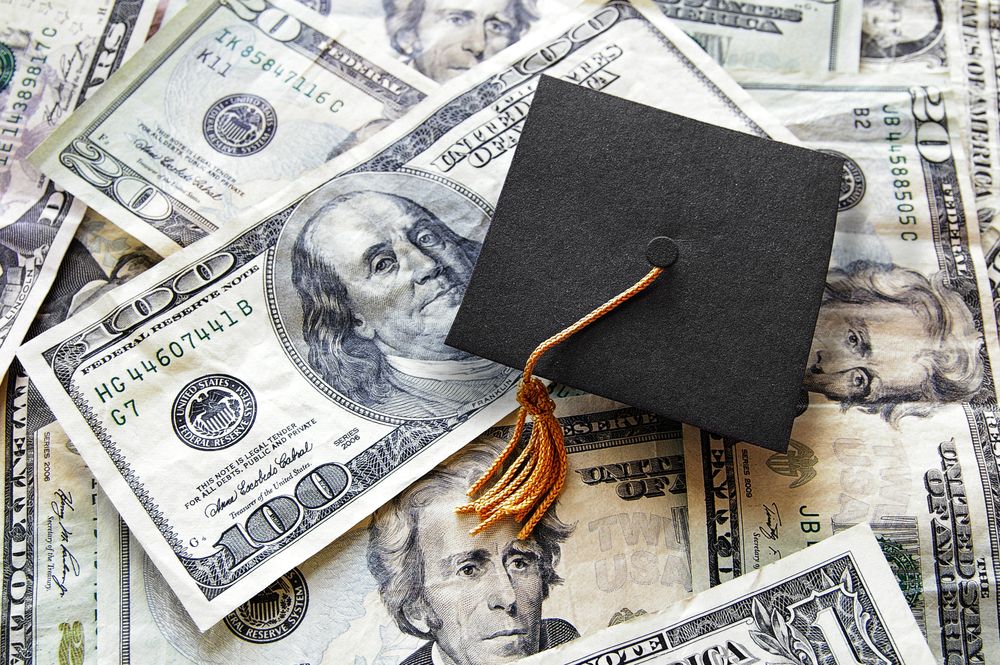
Student borrowers! You’ve heard about President Joe Biden’s student loan forgiveness plan, but what does it mean to you? We’ve got the answers, plus directions on how to apply. Take notes inside…
Student loan forgiveness has finally been addressed by President Joe Biden. And it could possibly mean millions of people could have their student loan balances slashed or canceled all together. However, you have to qualify, and then apply.
On Wednesday, President Joe Biden announced that Americans can have up to $10,000 of federal student loan debt forgiven. Wiped Out. Gone forever. If you’re a Pell Grant recipient, you could have up to $20,000 forgiven.
According to federal data, 43 million Americans have federal student debt, with an average balance of $37,667. A third of those owe less than $10,000 and half owe less than $20,000.
So who qualifies?
If you make less than $125,000 individually or $250,000 for a family, you qualify to have up to $10K forgiven IF your loan is held by the Department of Education, which includes Direct Stafford Loans, and all Direct subsidized and unsubsidized federal student loans. If you received Pell Grants, you can have up to $20,000 forgiven. Pell Grants were reserved for undergraduates with the most financial need. If you are a current borrower and a dependent, your parents’ income will determine if you qualify. Here's more info on Pell Grants.
“This additional relief for Pell borrowers is also an important piece of racial equity in cancellation,” said Kat Welbeck, Civil Rights Counsel for the Student Borrower Protection Center. “Because student debt exacerbates existing inequities, the racial wealth gap means that students of color, especially those that are Black and Latino, are more likely to come from low-wealth households, have student debt, and borrow in higher quantities.”
Also, if you didn't graduate, you still qualify.
As of right now, it hasn’t been revealed how borrowers can sign up, but details will likely start pouring in on the federal student aide website.
The loan payment freeze will be extended one final time - set to run until December 31st - and interest rates will remain at 0% until repayments start. As you know, student loan repayments were put on pause to help everyone get through the COVID-19 pandemic in 2020 and everyone was placed in good standing. Speaking of interest, it’ll be included in the balance you owe. Regardless of how much interest you owe, forgiveness will remove $10,000 from the total balance you owe.
Grad students included. If you took out a federal loan to cover your grad degree, you qualify for forgiveness.
According to the plan, you will not have to pay taxes on the amount forgiven. Congress yanked taxes on loan forgiveness through 2025.
OK, you qualify. Now, what? You have to apply.
You can sign up to receive a notification from the Department of Education when the application opens here.
You’ll likely have to send in forms and information to prove you qualify. Here’s more info here.
Now, when will all this get set in motion?
Well, it’s unclear. If the Republicans win in the midterms, they'll def try to repeal this as soon as they can.
The Associated Press reports:
The White House could face lawsuits over the plan, because Congress has never given the president the explicit authority to cancel debt. The Biden administration is tying its authority to the coronavirus pandemic and to a 2003 law aimed at providing help to members of the military. We don’t know yet how any legal action might impact the timetable for student loan forgiveness.
Another notable piece from the plan, the DoE has proposed a repayment plan that would cap monthly payments at no more than 5% of a borrower’s discretionary income, down from 10% now. Nice.
Borrowers will have to apply for the repayment plan if it’s approved, which could take some time - up to a year.
“What’s tough about income-driven repayment is that it does not take into account your other liabilities, such as your rent payment,” said Kristen Ahlenius, a financial counselor at Your Money Line, which provides financial literacy training. “If someone’s living paycheck to paycheck and their rent is taking up half of their paycheck and then their car payment takes the other, they have to choose. Unfortunately, income-driven repayment doesn’t take that into consideration, but it is an option.”
We shall see.
Borrowers who have already paid off their student loans don’t benefit from the plan. However, if you made voluntary payments since March 2020, you can request a refund for those payments, according to the Federal Office of Student Aid. You’ll have to contact your loan servicer to request a refund.
What are your thoughts about the student loan forgiveness plan? Are you here for it?
Photo: zimmytws/Depositphotos
source: theybf


 Lorem ipsum dolor sit amet, consectetur adipiscing elit. Etiam id libero non erat fermentum varius eget at elit. Suspendisse vel mattis diam. Ut sed dui in lectus hendrerit interdum nec ac neque. Praesent a metus eget augue lacinia accumsan ullamcorper sit amet tellus.
Lorem ipsum dolor sit amet, consectetur adipiscing elit. Etiam id libero non erat fermentum varius eget at elit. Suspendisse vel mattis diam. Ut sed dui in lectus hendrerit interdum nec ac neque. Praesent a metus eget augue lacinia accumsan ullamcorper sit amet tellus.
0 comments:
Post a Comment